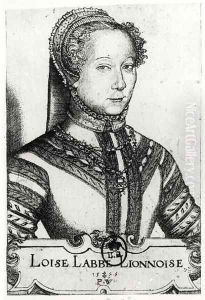Pierre Woeiriot de Bouzey Paintings
Pierre Woeiriot de Bouzey was a French engraver, medallist, and painter, known primarily for his engravings. Born in Neufchâteau, Lorraine in 1532, Woeiriot belonged to a family of artists and was a descendant of a noble line, which is reflected in the particle 'de' in his name, suggesting nobility.
Woeiriot began his artistic career as a goldsmith but is most noted for his work in engraving. His skills in this domain were largely self-taught, and he was influenced by the works of other contemporary artists and engravers such as Marcantonio Raimondi and the school of Fontainebleau. Woeiriot's engravings cover a range of subjects including religious themes, portraits, and illustrations for books. His style is characterized by meticulous detail, elegant figures, and complex compositions, which reflect the Mannerist style prevalent during his time.
One of his most significant contributions is a series of engravings of the months, which he created around 1561. These works are celebrated for their detailed representation of the labors and pastimes associated with each month, providing insight into the rural life of the period. He also produced a notable series of portraits of the Dukes of Lorraine and their consorts, which are valued for their historical significance as much as for their artistic merit.
In addition to his engravings, Woeiriot was also commissioned to create medals, which were popular among the nobility at the time as means of self-promotion and as commemorative objects. His works in this medium are praised for their clarity and precision.
Woeiriot's career spanned several decades, during which he was active not only in Lorraine but also in other parts of Europe, including Italy. Despite his mobility, much of his work reflects his loyalty to his homeland of Lorraine and its ruling family. Pierre Woeiriot de Bouzey passed away in 1599, leaving behind a body of work that provides a window into the artistic and cultural milieu of the Renaissance in France and the broader European context.
